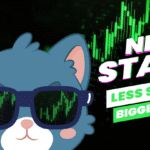Ethereum ETFs recorded a massive net inflow of $533.87 million on July 22, marking the third-largest single-day intake since the products launched, according to fresh data from SoSoValue.
The rally represents a heightened institutional demand of Ethereum ETFs as an investment asset and the base layer to real-world asset tokenization.
The new inflow has taken the cumulative net inflows to Ethereum-based ETFs to the current level of $8.32 billion. Trading volume per day also jumped up to a high of 1.97 billion and the aggregate net assets of all spot ETH ETFs are now at a high of 19.85 billion or approximately 4.44% of the total market value of Ethereum.
BlackRock and Fidelity Lead Ethereum ETFs Inflows

The top performing ETF of the day was BlackRock ETHA ETF, which received new capital of $426.22 million. This fund has more than $10 billion in assets, which makes it 2.24% of Ethereum’s circulating supply. In the Ethereum ETFs, ETHA remains to lead institutional demand.
Fidelity trust FETH contributed with a cash flow of 35.01 million as a cash inflow and its total funds received were over 2.36 billion. Grayscale Ethereum Trust also registered high volumes, raising 72.64 million, whereas other ETH ETFs tagged Franklin Templeton and Bitwise registered low or no volumes.
On July 22, Spot Ethereum ETFs recorded a total net inflow of $534 million, marking the third-highest daily inflow in history. pic.twitter.com/6iMly8AXLP
— Wu Blockchain (@WuBlockchain) July 23, 2025
Ethereum ETFs Shine as Bitcoin Sees Outflows
On its part, spot Bitcoin ETFs recorded a net outflow of 67.93 million on the same day. Grayscale GBTC was the only one to attract capital inflow, as it managed to attract $7.51 million, whereas large funds like, ARKB by Ark Invest and BITB by Bitwise attracted the exits of more than 30 million dollars.
Nevertheless, the total net amounts in the U.S. Bitcoin ETFs are leading at 154.77 billion, which is approximately 6.5% of all Bitcoin market capitalization, and 4.01 billion is a daily trading volume.
Katherine Wu, COO at ENS Labs, said, This is more than just a bull run reaction. In the year since launch, U.S.-listed Ethereum ETFs have pulled in nearly $6.5 billion, with over $2 billion entering in just the past week. Institutions aren’t just watching, they’re allocating.
Ethereum Leads in Real-World Asset Tokenization

The high number of people interested in Ethereum ETFs can be related to the fact that Ethereum has major dominance in the tokenization of real-world assets (RWA). More than 55% of all tokenized assets in the world are currently made on Ethereum.
The blockchain has already been embraced by BlackRock, JPMorgan, and Visa to tokenize treasury systems, commercial papers, and equity systems.
To further add to these growing factors, Robinhood recently announced tokenized stock programs to run on Ethereum Layer-2 network Arbitrum, which only goes to reinforce Ethereum winning the Ethereum ETFs and tokenization race.
Staking Integration Could Redefine Ethereum ETFs
In the future, the industry leaders indicate that ETH ETFs could be developed to even incorporate staking rewards which give yield and liquidity.
Kean Gilbert, head of institutional relations at Lido DAO, said, Staking within ETF structures remains complex, particularly in Europe, where exposure caps apply. Yet as transparent U.S. rules are coming, tokenized staking instruments such as stETH can take centre stage in the Ethereum ETF plans.
With ETH ETFs receiving more capital, and playing an increasingly robust role in traditional finance, the capital inflow momentum is an indication that the blockchain is now the natural rails of innovation in the institutional space, but that momentum has only just started. For more expert reviews and crypto insights, visit our dedicated platform for the latest news and predictions.
Conclusion
Based on the latest research, Ethereum ETFs are rapidly emerging as a cornerstone of institutional crypto investment. High inflows, the support of financial giants, and growing applicability in asset tokenization ETFs of ETH are not only changing the dynamics of the market but predicting the beginning of the transition to blockchain-based financial infrastructure.
Read next: Spot Ethereum ETFs End Nine-Day Outflow Streak with $5.8M Net Inflows
Follow us on Twitter and LinkedIn, and join our Telegram channel to be instantly informed about breaking news!
Summary
Spot Ethereum ETFs saw a significant $533.87 million inflow on July 22 their third-largest daily gain highlighting strong institutional interest. Total net flows have risen to $8.32 billion, topped by BlackRock’s ETHA with $426.22 million. Tokenization of real world assets using Ethereum with the support of such giants as BlackRock, Visa, etc. keeps increasing. On the other hand, Bitcoin ETFs had net outflows. Analysts believe that future ETH ETFS will add staking rewards, indicating a new innovation in institutional crypto-finance.
FAQs
1. Why did Ethereum ETFs see a $534M inflow?
Rising institutional interest and Ethereum’s role in tokenized assets fueled the surge.
2. Which ETF saw the most inflow?
BlackRock’s ETHA led with $426.22M in new capital.
3. How did Bitcoin ETFs perform the same day?
They saw a $67.93M net outflow, unlike Ethereum’s strong gains.
4. Why are institutions choosing ETH ETFs?
Ethereum powers most tokenized assets and offers future staking potential.
Glossary Of Key Terms
Spot Ethereum ETF
Fund that holds Ethereum directly for investor exposure.
Real-World Assets (RWAs)
Physical or financial assets represented on-chain.
FETH
Fidelity’s ETH ETF with growing inflows.
GBTC
Grayscale’s Bitcoin trust product.
Arbitrum
Ethereum layer-2 used for scaling and tokenized assets.
Staking
Locking ETH to earn rewards and support the network.
Institutional Allocation
Big firms investing in crypto funds or ETFs.
Layer-2 Network
Secondary blockchain to scale Ethereum faster and cheaper.





























